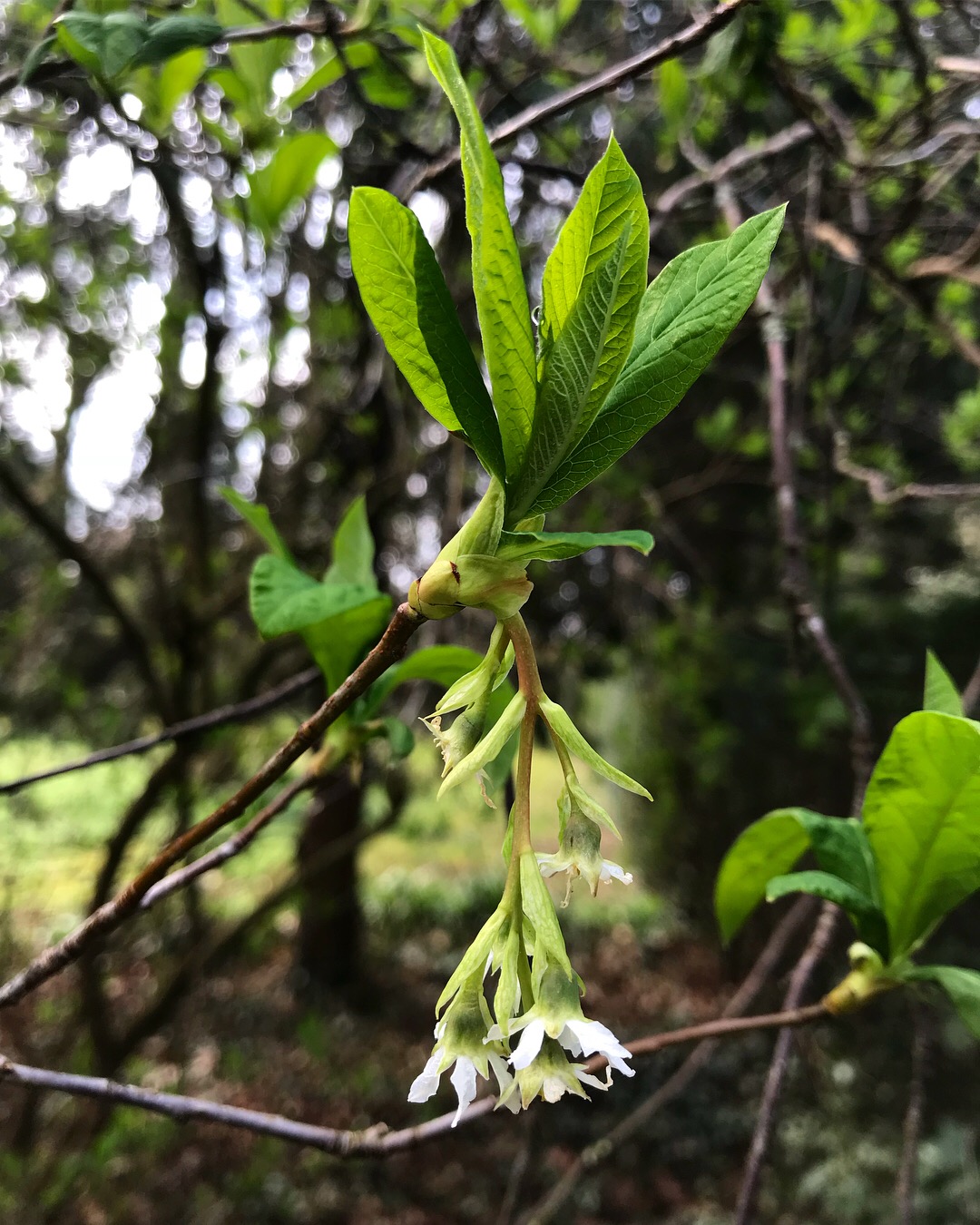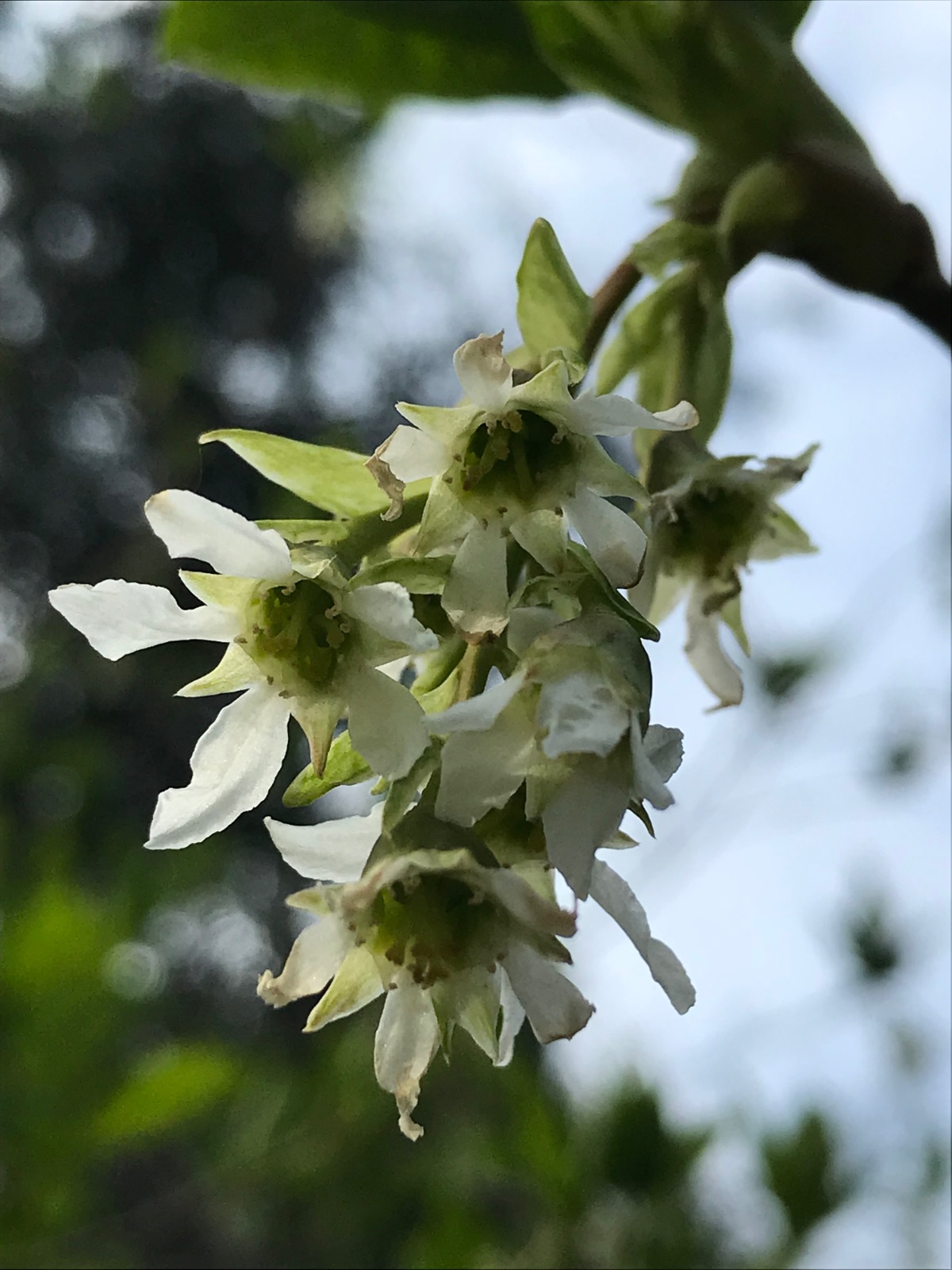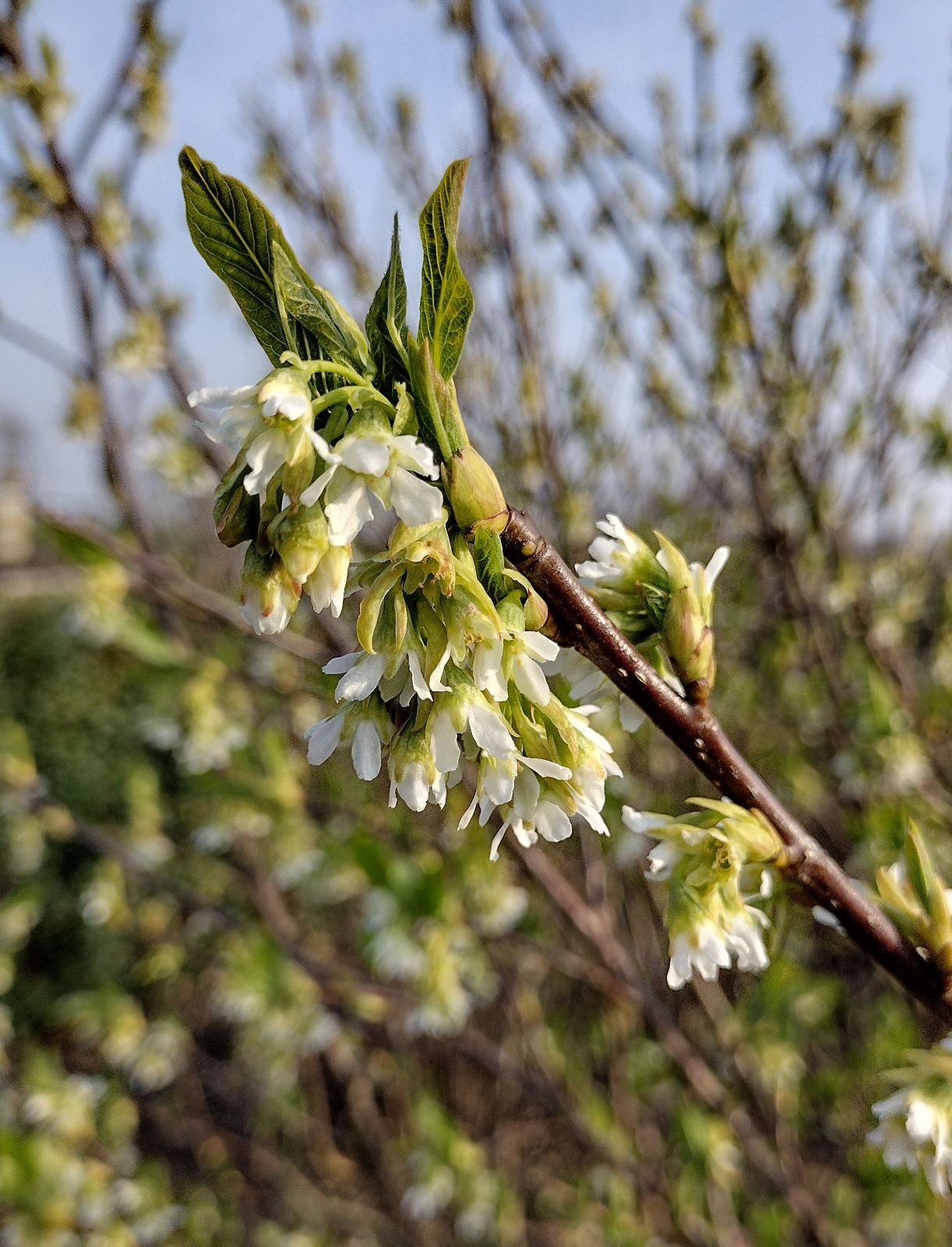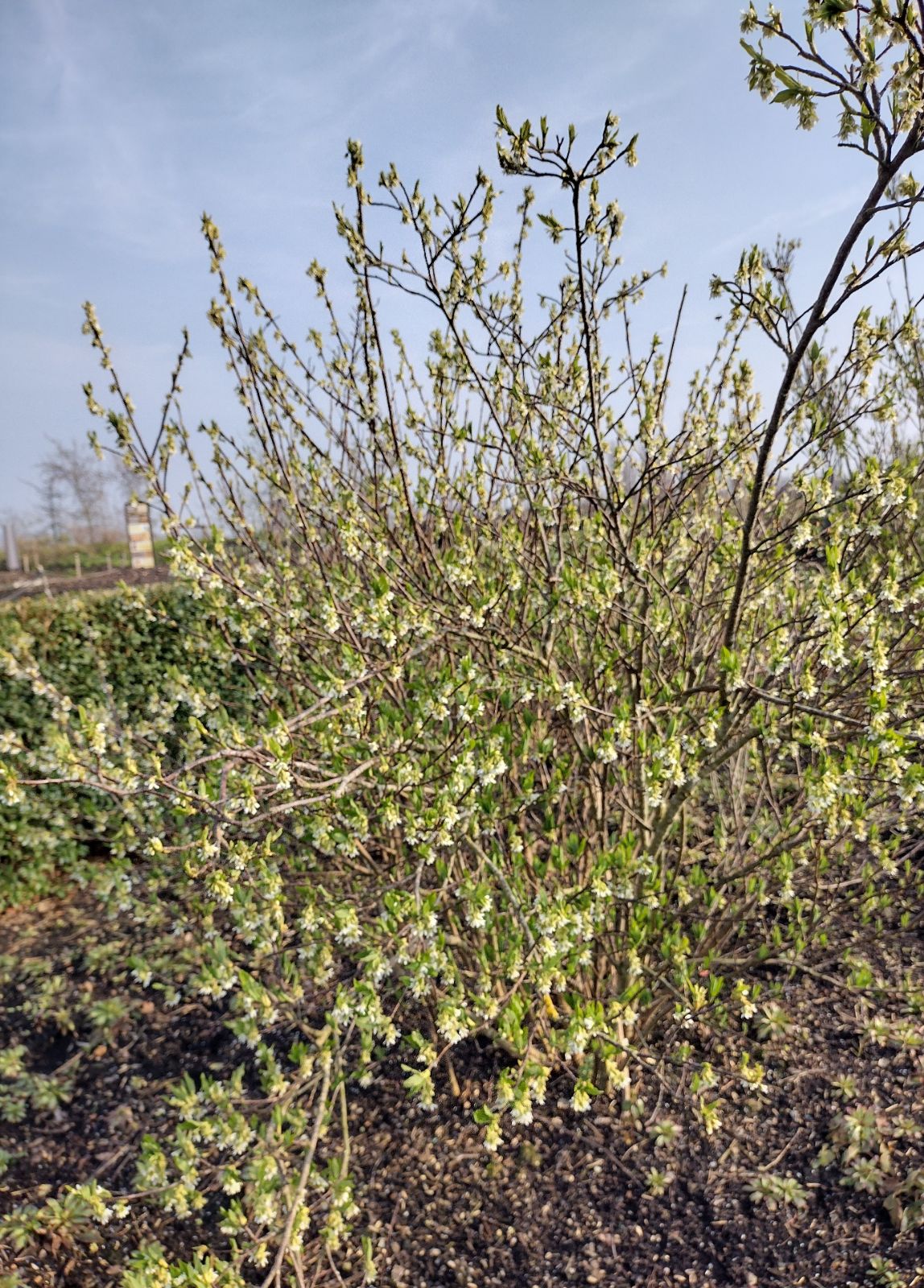Oemleria cerasiformis
Credits
Article from Bean's Trees and Shrubs Hardy in the British Isles
Recommended citation
'Oemleria cerasiformis' from the website Trees and Shrubs Online (treesandshrubsonline.
Genus
Common Names
- Oso Berry
Synonyms
- Osmaronia cerasiformis (Hook. & Arn.) Greene
- Nuttallia cerasiformis Hook. & Arn.
Other taxa in genus
[described by Bean under the name Osmaronia cerasiformis]
A deciduous shrub, usually 6 to 8 ft (occasionally more) high, with the habit of a black currant, the stems springing erect from the ground in great numbers, and forming ultimately a dense thicket several feet through; branchlets glabrous, bright green. Leaves alternate, narrow-oblong or lance-shaped, 2 to 31⁄2 in. long, 3⁄4 to 11⁄4 in. wide, of thin texture, green and quite glabrous above, greyish beneath; margin entire; narrowed at the base to a stalk 1⁄4 in. or less long. Male and female flowers usually on different plants; both borne on stiff, pendent, copiously bracted racemes 11⁄2 to 2 in. long. Each flower is about 1⁄4 in. across, the five petals white; the calyx green, bell-shaped, five-lobed. Male flowers have fifteen stamens; females five carpels. Fruits plum-like, oval, 3⁄4 in. long, purple when ripe, usually not more than two of the carpels of each flower developing. Bot. Mag., n.s., t. 582.
Native of California; introduced in 1848. In gardens the Oso berry is useful for its early, almond-scented blossoms, which are usually fully open by the third week in March, being produced from the leafless shoots of the previous year. The female plant is of coarser habit than the male and not so pretty nor so free in blossom, but it is worth associating with the male for the sake of its abundant fruits. The species is very hardy and thrives in a well-drained, loamy soil. It is easily propagated by taking off small pieces from old plants, also by seeds. The fruits are very bitter and strongly almond-scented.




